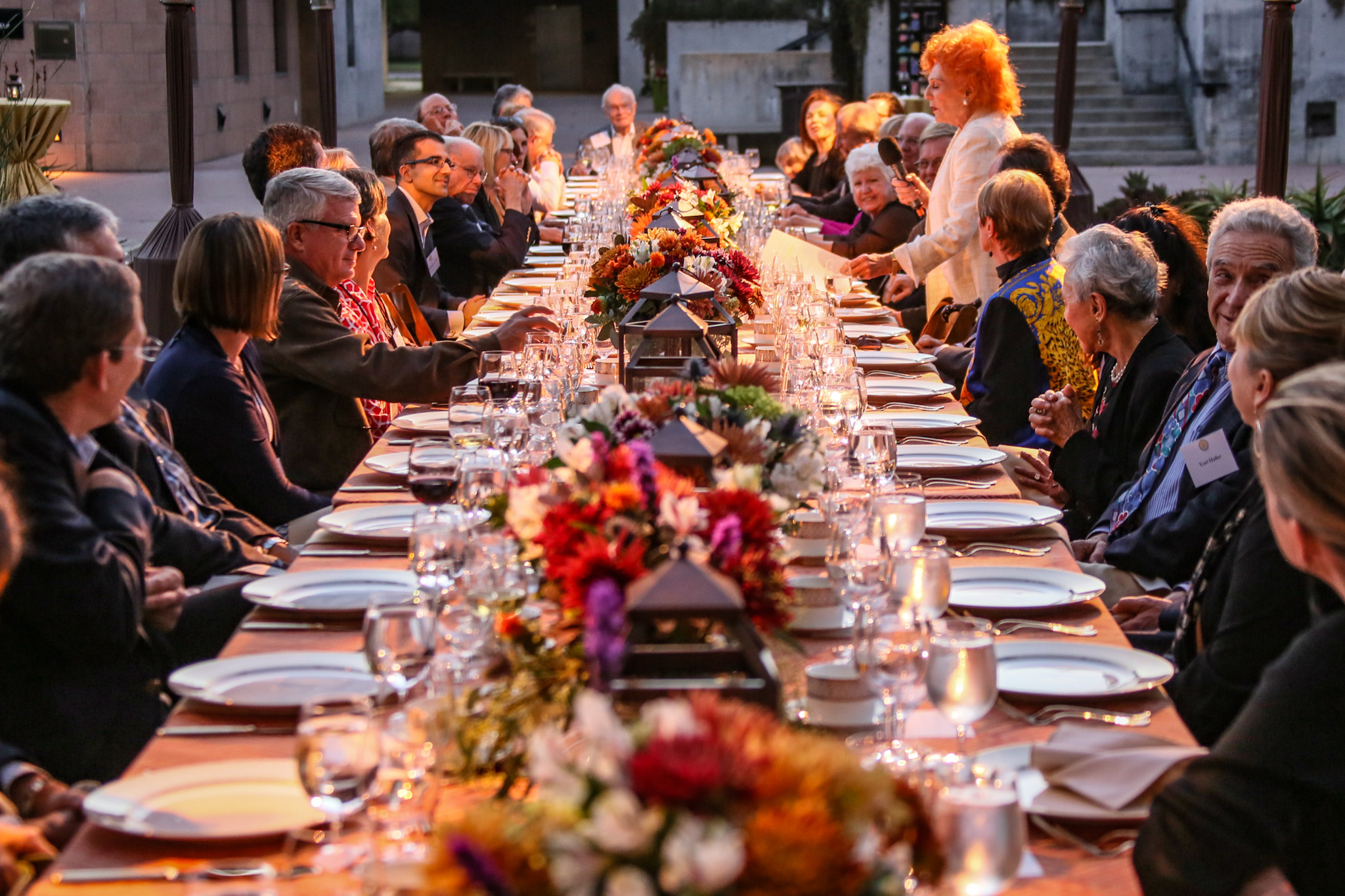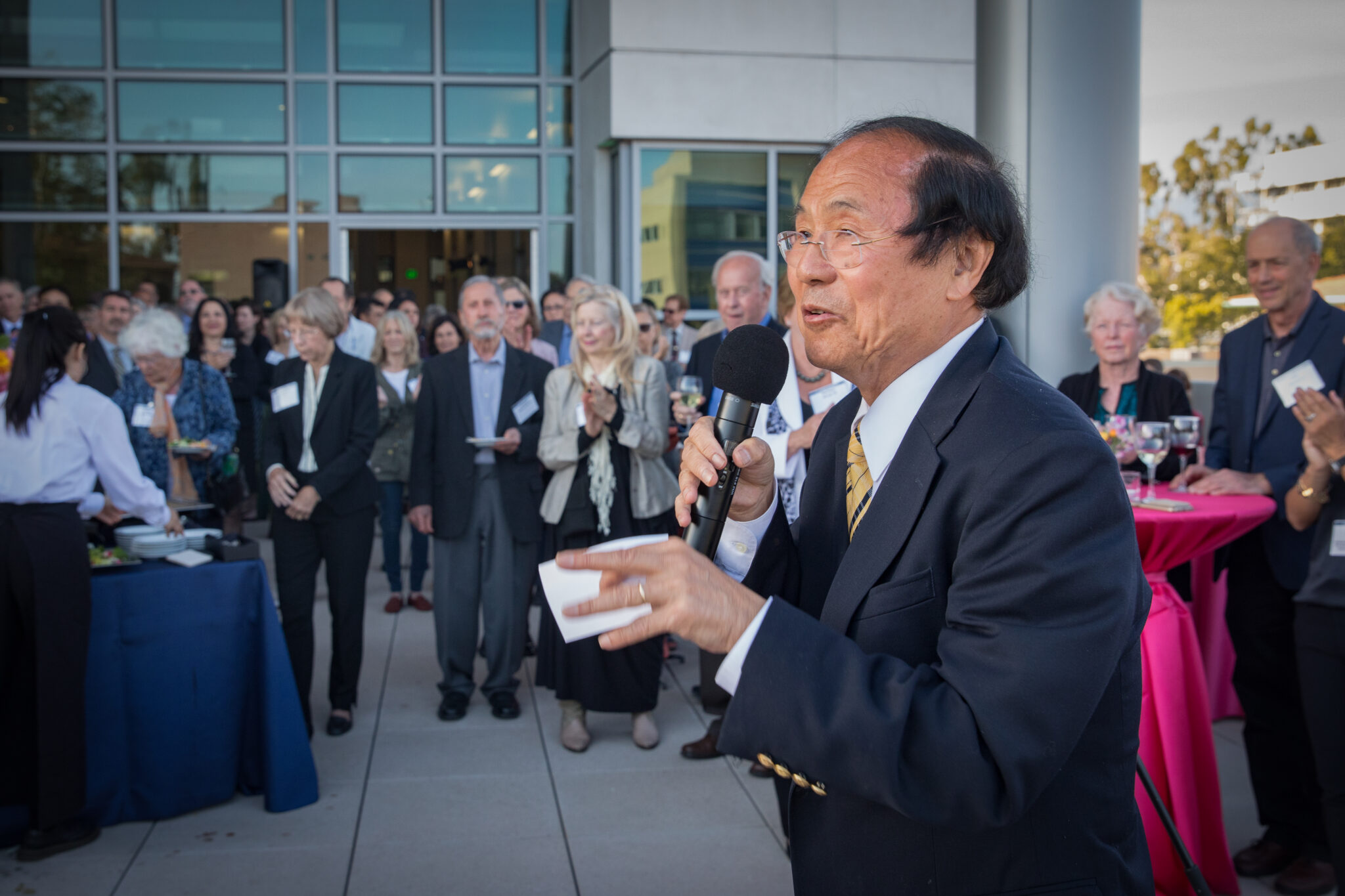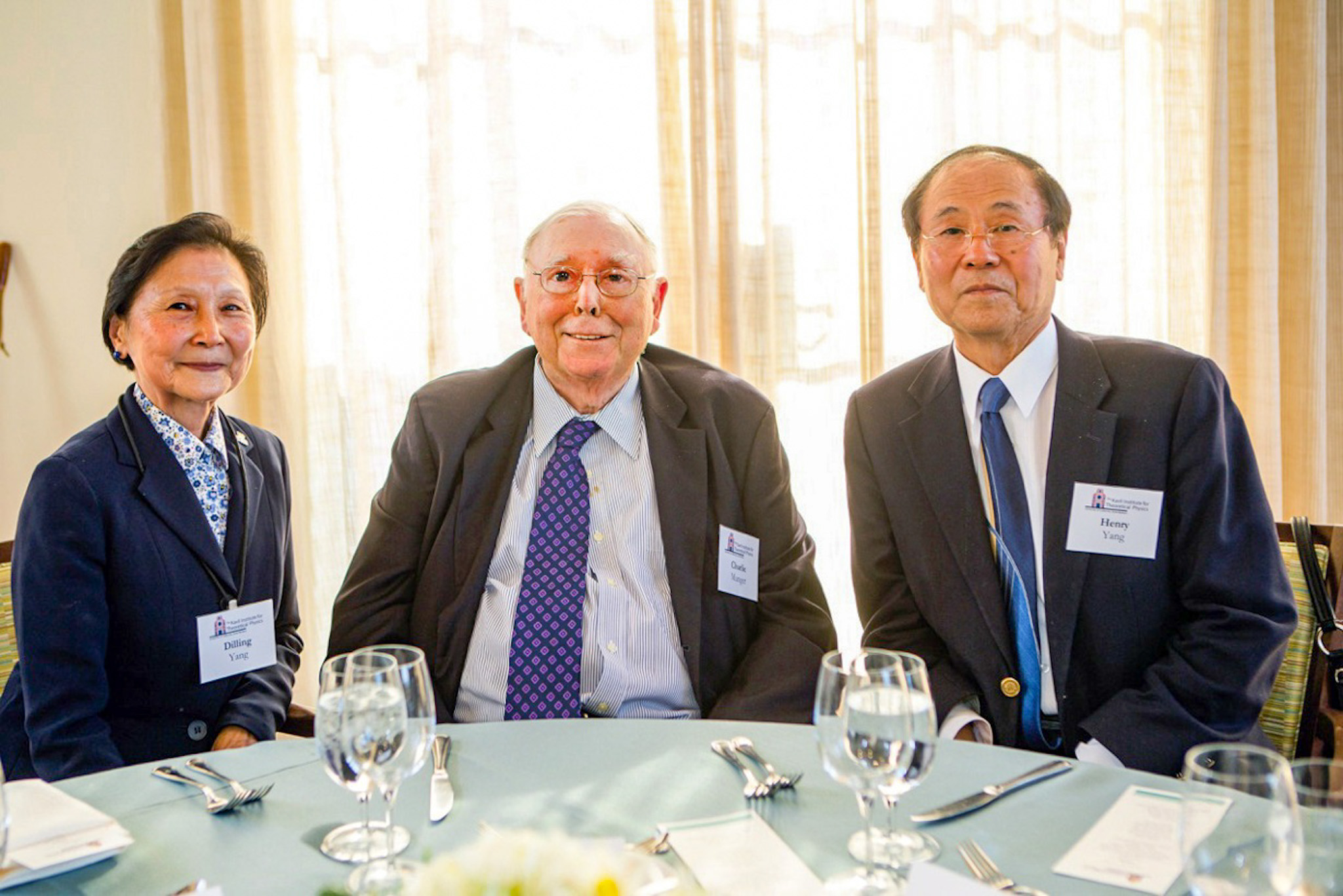Private Millions: UCSB’s lifeline against a stagnating state budget
Increasingly funded by philanthropy, the university sought to increase state funding and court donors across the country.
Chancellor Yang raises a glass alongside trustee Elizabeth Gabler at the May 2019 Trustee Dinner, hosted by Gabler at her Hope Ranch residence. Courtesy UC Santa Barbara Foundation.
January 26, 2023 at 12:00 pm
UC Santa Barbara’s fundraising efforts bring in over $100 million in private donations annually — money that accounts for an increasing percentage of the public university’s budget as state government funding stagnates.
The Nexus obtained dozens of documents — ranging from public donor logs and tax filings to internal audits — procured through current and deleted university websites, the UC Regents and student employees who anonymously shared information with the Nexus. The documents detail the extent donor money has been sought and depended upon in recent years, and how UCSB funded lobbying using the profits of invested donor money in a bid to increase state funding.
Reliance on philanthropy is now a permanent fixture at UCSB; donated funds account for “over 10% of the student experience” this year, per an estimate made by the university’s annual fund in documents obtained by the Nexus. State funding has fallen from over 41% of the university budget in 2003 to 15% this year, according to the documents.
The university benefitted from over $1.6 billion in private philanthropy from small donors and multi-billionaires alike over the past two decades as its fundraising operations steadily expanded.
The UC Santa Barbara Foundation
The private donor money largely flows through the UC Santa Barbara Foundation — the 501(c)(3) nonprofit created in 1973 to facilitate donations on behalf of the university. The foundation is governed by a slate of appointed and elected trustees tasked with pursuing new donors, some of whom operate fundraising committees across the country.
The full group of trustees — an assortment of multi-millionaires, CEOs, attorneys, professors and others, including, by default, the university’s current chancellor and Associated Students president — meet several times a year for dinners and celebrations. Over 1,000 photos obtained by the Nexus detail over 30 such events held since 2015.
Have a News Tip?
There are several methods of contacting Nexus reporters should you have firsthand knowledge or documentation relating to a significant event or issue.
Text or Signal at:
805-830-6527
Email at:
Receptions are held for the university’s Gold Circle Society and Lancaster Society — select groups whose membership is limited to donors that have gifted upwards of $1 million and $100,000, respectively.
Numerous billionaires — including Saudi Prince Mohammed bin Fahd bin Abdulaziz and Microsoft co-founder Paul Allen, among other internet and real estate moguls — have gifted millions to the university, often securing the naming rights of the schools and buildings that stem from their philanthropy. Gifts from foundations and such individuals comprise the bulk of donor funds utilized by the university.

Mark Alfred / Daily Nexus
UCSB also benefits from millions brought in by donations from industry titans, including Google, Intel and Ford, as well as various national defense contractors such as Northrop Grumman Corporation, Boeing and Raytheon BBN Technologies, records show.

Mark Alfred / Daily Nexus
UCSB’s Chancellor Henry T. Yang told the Nexus that private giving provides a slew of benefits to the campus, among them assisting the funding of capital projects, contributing to arts and lecturing programs and aiding the advancement of the university’s research.
“Our university is tremendously fortunate to have the generous support of our alumni and friends, which benefits our students, our campus, and the state of California in countless ways,” Yang said in a statement to the Nexus.
UCSB’s lobbying for increased state funding
The day-to-day operational costs of the foundation are partially financed by the profits of money donated to UCSB that are held in a short-term investment pool (STIP). In 2020, $178,197 was utilized from the fund for this purpose.
In the face of declining state funds, the UCSB Foundation used profits from invested donor money to fund lobbying in support of a 2020 ballot initiative — Proposition 13 — for the state to borrow $15 billion to fund public schools, including $2 billion for the University of California.
Under state law, university resources can’t be contributed toward measures that have made it on the ballot. However, university foundations are able to allocate funds for lobbying with restrictions, as they themselves are not government entities.
In 2020, the foundation allocated $200,000 in earnings generated from STIP to the California Coalition for Public Higher Education to fund lobbying in support of Proposition 13, according to a report prepared by the auditing firm PricewaterhouseCoopers obtained by the Nexus. The lobbying amount is also reflected in the foundation’s publicly available tax filings.
California voters ultimately rejected Proposition 13, and the foundation did not undertake any lobbying efforts in 2022, according to UCSB Media Relations Manager Kiki Reyes.
PricewaterhouseCoopers, the independent auditor of the UCSB Foundation and other university functions, is itself a Lancaster society member, having donated over $100,000 to the university, public donor records show. Their donations have supported the university’s economics and accounting major, according to Reyes.

Trustees gather outside UCSB’s Cheadle Hall for a dinner on Oct. 29, 2015. Courtesy UC Santa Barbara Foundation.
“PWC is one of several national accounting firms that support the UC Santa Barbara Economics and Accounting Program because they recognize the value of having a well-educated and trained graduate,” Reyes said in a statement to the Nexus. “The auditing services are not connected to the financial support of our Economic and Accounting Program.”
The Campaign for UC Santa Barbara
Chancellor Robert A. Huttenback first attempted a long-term fundraising campaign for the university in October 1985 — the goal to raise $107.2 million over 10 years through a long-term fundraising endeavor dubbed the Campaign for UC Santa Barbara, a bulletin at the time announced.
Huttenback’s resignation the following year and subsequent felony embezzlement conviction over improper use of university funds uncovered by the Nexus put a damper on the campaign, which did not move forward in his absence.
A new private fundraising campaign of the same name quietly emerged in 2000 under Chancellor Henry T. Yang, a more successful venture that brought in over $1.1 billion during its 16-year run, aided by dozens of multi-million dollar gifts from foundations and wealthy individuals.

Chancellor Yang speaks at the 2018 Spring Celebration Reception. Courtesy UC Santa Barbara Foundation.
Gifts of that scale brought with them the naming rights of schools, buildings and other university landmarks: Bren Hall, named for billionaire philanthropist Donald Bren, Gevirtz Graduate School of Education, named for former U.S. Ambassador to Fiji Don Gevirtz and Henley Gate and Henley Hall, both named for Oracle Chairman Jeff Henley.
Campaign leadership included Academy Award-winning actor and UCSB alumnus Michael Douglas, who served as honorary chair and encouraged potential supporters to contribute to the campaign.
Douglas himself donated at least $1.5 million over the course of the campaign — one of the 15,920 individual donors that contributed to the campus’ record $80.1 million fundraising year in 2004.
Yang presented the campaign’s success to the UC Regents on July 20, 2005, with a list of achievements — among them a 47% increase in the total number of donors since the campaign’s start and a $45 million increase in endowment funds.
He also displayed a “Vision for UC Santa Barbara’s Future” as a part of the presentation — a depiction of new campus plazas and buildings — which was a component of the campus development plan developed by Urban Design Associates that never materialized.

Catered receptions, often with live music and wine, are a staple of the university’s charitable foundation. Courtesy UC Santa Barbara Foundation.
In the six months leading up to the UC Regents meeting, the campaign held fundraising receptions across the United States. The reception locations — Los Angeles, New York, Washington, D.C., Orange County, San Diego, the Pacific Northwest and the Bay Area — were later granted their own subcommittees under the foundation, run by dozens of trustees and others.
The committees work to engage alumni, parents and donors, where they live and bring the university to them, according to Reyes.
“Programming typically includes updates on the university and presentations on the research and discoveries that are happening on our campus. They do not involve direct fundraising efforts,” Reyes said in a statement to the Nexus.
The drive for assets in recent years has UCSB asking for donations of any kind. The university encourages potential supporters to leave gifts to the university upon their death — whether that be a stamp collection, valuable antique, boat or other personal property.
A smaller aspect of UCSB’s fundraising efforts involves the university cold-calling parents and alumni to ask for donations. Reading from scripts prepared by the university, student workers impress upon parents the impact donations have on the student experience at UCSB and underscore the amount donor funds contribute to the university compared to state tax dollars.

Billionaire Charles Munger sits between Dilling and Henry Yang at the opening of the physics residence Munger funded. Courtesy of Kavli Institute for Theoretical Physics.
Since the campaign’s end in June 2016, UCSB raised over $100 million annually, aided in its final year by the single largest gift the university had ever received: $65.4 million in stocks gifted by billionaire philanthropist Charles Munger for his namesake physics residence.
Munger is also expected to donate millions more toward a massive student dormitory called Munger Hall, to which he has already contributed an undisclosed amount of funding. In return for his millions, Munger is set to receive not just the naming rights of the building, as is common, but extensive input over its controversial near-windowless design.
The future of UCSB fundraising
UCSB announced last week that longtime trustee and donor John Arnhold will now chair the foundation. Arnhold and his wife, Jony Arnhold, gifted over $5 million to the university for a tennis center in their name that opened in 2021. UCSB also offered donors the opportunity to get the naming rights of the two center courts and two locker rooms at $250,000 apiece.

John Arnhold (center) stands between Chancellor Yang and Associated Students President Gurleen Pabla at the 2022 trustee reception held Oct. 28 at the UCSB Club & Guest House. All three are trustees. Courtesy UC Santa Barbara Foundation.
The announcement also introduced four new trustees to the foundation: Chris Fletcher, a real estate investor; Paul Graziano, managing senior partner at a local law firm; Wenbin Jiang, the CEO of Cytek Biosciences and Hongjun Zhu, an entrepreneur.
Another billionaire provided UCSB with one of its largest ever donations last year. Marc Benioff, the CEO of Salesforce and owner of Time magazine, and his wife Lynne Benioff, a philanthropist and director with the UC San Francisco Foundation, donated $60 million to support ocean science research at the university and received the naming rights of UCSB’s existing Marine Biotechnology Laboratory.
Additional high-profile gifts already in the pipeline position UCSB to embark on a second long-term fundraising campaign expected to publicly launch in 2025, the university informed the UC Regents in a Jan. 18 meeting.
The 2010s saw a fundraising average of $110 million annually. Under its second fundraising campaign, UCSB hopes to bring in an annual average of $200 million between 2025 and 2031, further increasing the proportion of its budget supplied by donor funding.
“UC Santa Barbara will always be a campus that serves California, and support from people who believe in our mission is becoming more critical than ever,” Yang said in a statement to the Nexus. “As we look toward the future, private philanthropy, which complements state funding, will help us fulfill our shared vision of advancing excellence in teaching, research, and public service with wide-ranging impact.”
A version of this article appeared on p. 1 of the Jan. 26, 2023, print edition of the Daily Nexus.

















